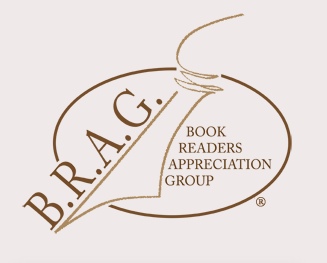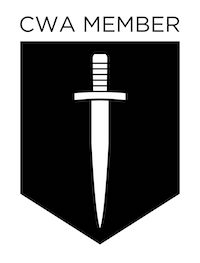 Born into a large East End family, Jean was brought up in the overcrowded streets clustered around the Tower of London. Her Victorian stories shining with authenticity have delighted both readers and critics. Jean’s fifth book, Call Nurse Millie, set in 1940s London, draws on her own experience as a district nurse in East London. But things have changed a tad since the 1940s…
Born into a large East End family, Jean was brought up in the overcrowded streets clustered around the Tower of London. Her Victorian stories shining with authenticity have delighted both readers and critics. Jean’s fifth book, Call Nurse Millie, set in 1940s London, draws on her own experience as a district nurse in East London. But things have changed a tad since the 1940s…
Over to Jean!
Ten things that have changed since Nurse Millie Sullivan’s day
Now the reason I’m so into history is because I love to discover little details and marvel at the difference between the life I live and times past. Usually these are quite marked changes such as in clothing or innovative technology but for me some of the most interesting aspects of change are the little things that almost go unnoticed.
My new book Call Nurse Millie isn’t set that long ago, relatively speaking, just as WW2 ended and it would be easy to highlight any number of things that have changed radically since that time – fashion, communication, transport and medicine – but I’d like to concentrate on some little everyday things that seem to have changed unnoticed.
 Smog
Smog
London used to be notorious for it smogs and even gave the capital its nickname of The Smoke. It had been a problem since Victorian times and Londoners were used to dealing with it but the Great Smog of 1952 was a catalyst for politicians and health official to do something. A combination of weather conditions and an increase in coal consumption caused the densest and one of the longest fogs recorded. It caused havoc to the capital’s public transport and seeped in to houses and public places causing cinemas and theatres to close. But the most serious effect was on the health of the population. It claimed the lives of over 6000 Londoners and impacted on the health of another 25,000 although modern researchers put the death rate from the 1952 smog nearer 12,000. It ultimately led to the 1956 Clean Air Act which finally consigned the London Smog to history.
Children in Callipers
I can clearly remember school friends whose legs were encased in metal callipers because they had contracted polio. Polio was the scourge of the summer months and struck at random mainly at children between the ages of 4-9. Nearly all would recover speedily and suffer no long term effects from the disease but for the unlucky few it would lead to breathing problems requiring weeks in an early form of ventilator called an iron lung. Others would be left with withered limbs requiring callipers to assist mobility. However, with the development of a vaccine in the early 1950s and the mass inoculations of the late 50s early 60s the sight of children with thin, malformed legs are now a thing of the past.
 Babies left outside shops in prams
Babies left outside shops in prams
The very thought of leaving your child unattended for a nano second let along while you get a week’s worth of shopping sends shivers of anxiety through modern parents. However, it was quite commonplace to see row upon row of prams all with a little occupant sitting up in them outside shops. Arguably, it was more dangerous in those days because many unmarried mothers were coerced to give up with babies so not a week went by without a baby being snatched from its pram by some poor woman suffering from post-natal depression.
Vegetables in season or with insects in them
With the supermarket shelves loaded down with exotic fruit and veg from all four corners of the world we never actually have to wonder what’s in season. But in Millie’s day strawberries, cherries, lettuce and tomatoes were in the shops for a very short period in early summer and then that was the last you saw of them until the following year. Also today as most fruit and vegetables are grown in almost sterile conditions no one now finds a maggot in their apple or a creepy-crawly in the lettuce.
Women collecting their meat each day from the butchers
Only the wealthiest 10% of households owned refrigerators in post-war Britain so most woman bought their meat on Friday or Saturday from the butcher and collected it on a daily basis. Even by 1960 the number of domestic fridges had only risen to 33% so I have Millie constantly worrying if she will be off work in time to pick up the meat from the butchers.
People who only washed their hair once a week
Odd to think when most of us shower each day and sometimes twice a day that most people in Millie’s world would only have a bath and wash their hair once a week. Without proper bathrooms and limited facilities for heating quantities of water people contented themselves with a daily strip-wash at the kitchen sink. The war-time hairstyles of tight perms and pinned curls meant that most women visited the hairdresser once a week usually on Saturdays, to get their hair set. This would remain as a fixed hairstyle until the following week when the process was gone through again. If you wanted to wash your hair mid-week it was an all-night process of washing, rolling and drying so when a woman in an old film says they are staying in to wash their hair they weren’t kidding.
Packs of dogs let out for the day
Unlike dog-owners of today who often employ mid-day dog walkers or sitters if they are at work almost everyone who owned a dog in the 1940s got around this problem by just letting their dog out to roam the streets all day. As late as the 1960s it was commonplace to see dogs either singularly or more often gathered together sniffing around and scrapping with each other while their owners were at work.
Women with darned stockings
This might sound bizarre to a generation that doesn’t understand the term ‘darning’ let alone how to do it, that women would repair their stockings. Even after the clothes rationing finished luxuries such as stockings remained in short supply and very expensive. To go out bare-legged was considered to be very brazen so a respectable woman wouldn’t have left the house without wearing a pair of stockings even if that meant they had stitching running up their legs. I remember as a child my mother darning her nylons to make them last another few days.
 Home-made clothes and knitwear
Home-made clothes and knitwear
Making your own clothes today is regarded as a craft hobby but in Millie’s times women made much of what they wore. It was essential to make the clothing coupons and family budget stretch that little bit further. There had been a government campaign encouraging women to make over old clothing with Mrs Sew & Sew and Make do & Mend. Women would also knit their own jumpers and unravel old ones to reuse the wool.
People wearing a black armband
It was something that was always done when a close family member died as a sign of respect. I remember both my mum and dad wearing one when my grandmother and uncle passed away but that was in the early 1960s. The last time I can recall anyone wearing a black arm band was my dad when my mum died in 1973. It is a tradition that seems to have disappeared completely.
I could have added milkmen to the list although I have seen the odd one or two about but I’m pretty sure they will go the way of the Victorian milkmaid leading a cow from door to door before too long.
 It’s little details like the one described above that I like to slip into my novels because to my mind it is the small things, not the great events that highlight the way society has changed.
It’s little details like the one described above that I like to slip into my novels because to my mind it is the small things, not the great events that highlight the way society has changed.
Fascinating! A true glimpse of the past – thank you so much, Jean.
Call Nurse Millie is available in hardback, paperback and ebook
Visit Jean’s fascinating website brimming with East London history at http://www.jeanfullerton.com/
If you enjoyed this post, do share it with your friends!
Like this:
Like Loading...
 INCEPTIO is off travelling around the London Underground (metro/mass transit system).
INCEPTIO is off travelling around the London Underground (metro/mass transit system).

















